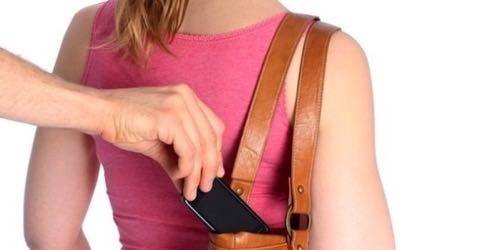
Once upon a time, nothing was more stressful than losing your wallet. But these days, losing your smartphone can be even more traumatic – and even more expensive and risky. Fortunately, there are a number of ways to track and hopefully recover lost or stolen mobile devices.
It’s a big and growing problem. Recent surveys show that travelers worry more about losing their phone than their wedding ring! And the Wall Street Journal estimates that losing your phone is like losing “your wallet with $900 in cash in it, plus your address book and your bank passwords.” And that doesn’t even address the security risks from compromised access to personal and corporate email, passwords and other potentially sensitive data. (This infographic lays out many of the dangers…)
Worse, it happens all the time. Cell-phone insurance provider Asurion reports that 60 million smartphones are lost, stolen or damaged each year. In dollar terms, according to a report conducted by mobile security firm Lookout, Americans lost $30 billion dollars worth of smartphones in 2011.
But just because you’ve lost your mobile device, it doesn’t mean that all hope is lost along with with it – as long as you had the foresight to use one of the many services that can help find lost devices. Some are platform specific, others work with a variety of smartphones, tablets and laptops. Some are dedicated to mobile recovery, others are primarily designed to do other things but offer some useful mobile-recovery features.
With varying degrees of effectiveness, these apps can do a variety of things to help recover a lost phone, including pinpoint device location, take photos of the alleged thief and even sound ear-piercing alarms.
What happens next is up to you. We emphatically do not recommend you play amateur detective and hunt down your device yourself – you could end up with much bigger trouble than a missing phone. Far better to funnel this information to law enforcement and let them follow up.
Here’s a look at your top options for finding a missing mobile device:
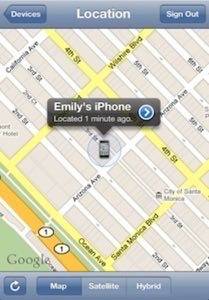
Find My iPhone (iOS: free)
By far the best-known method for finding a lost device is Apple’s free Find My iPhone app. It has all the key features, including geolocation, remote alarm and remote wipe. All you need to do is enable the app from your device settings.
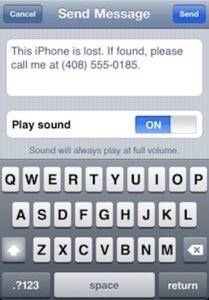
Here’s how it works:
First, sign in to iCloud.com and it will try to locate your device and pinpoint it on a map. From there, a pop-up will present you with these options: 1. Send a message to display on the phone, in hopes that a good samaritan will contact you to return it 2. Play a sound in case your device is close enough for you to locate yourself 3. Set a four-digit passcode to remote lock the device 4. Initiate a remote wipe (you can later restore with an iCloud backup if your device is returned)
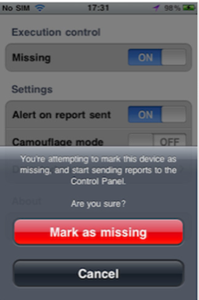
Prey (iOS, Android, Linux, OSX, Windows: free and premium)
Prey is the only mobile-recovery application that works across phones, tablets and computers. An open source product, its features include geolocation, snapshots, screenshots and remote hide/wipe. Prey Recoveries documents device-recovery success stories from around the globe.
In order for Prey’s device tracking to work, the device must be connected to the Internet:
- Install the software, then when you receive the activation link via email, log in to the website control panel – this will display any device you have running the software.
- If your device is lost, log in to the control panel and select any or all of the following:
- Info to gather (this will be sent to you via email): geolocation, network info, webcam images.
- Actions to perform: sound an alarm, send an alert to the device screen, remote lock or secure data.
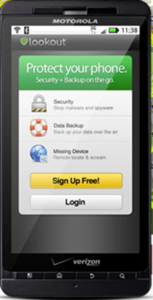
Lookout Mobile Security (iOS, Android: free and premium)
Lookout locates a missing device somewhere in the world every 5 seconds. But in terms of device tracking, the free version isn’t as feature rich as some competitors – it lacks remote wipe and lock, for example, but does include other features like security and data backup.
To begin tracking:
- Install the app and enter an email address
- Log in to the Lookout website
- Press the Locate button to display the device location on Google Maps
- From the control panel, you can also sound an alarm
- Remote wipe and remote lock are available only in the premium versions ($2.99/mo or $29.99/yr)
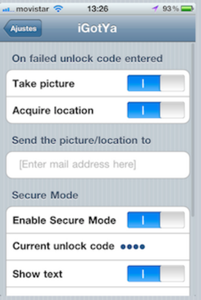
iGotYa (Jailbroken iOS: $4.99)
If you’ve jailbroken your iPhone, then this app may be for you. It uses snapshots and geolocation to help find your device. Once you’ve downloaded from the Cydia store (available only for jailbroken iOS devices), ensure you have an iPhone device passcode set up, then go to the iGotya settings to enter your email address and enable secure mode.
If your device ends up in the wrong hands:
- After an incorrect passcode is entered (apparently even once), the phone automatically takes a snapshot of the person using it – presumably the thief – and emails it to the address you entered during setup, along with the phone’s GPS location on Google Maps.
- With secure mode enabled, after two failed passcode attempts, your sensitive data – contacts, calendar, and pictures will disappear. But fret not, if your device is recovered (and a correct passcode entered), your data will reappear.

Dropbox (iOS, Android, Linux, OSX, Windows: free and premium)
Dropbox may not be the name you’d most associate with mobile security, but the online storage service has a hidden feature that could help you find a lost device.
- Log in to your Dropbox account
- Go to Settings
- Click on the Security tab
- In the list of devices that you have linked to your account, hover over “Most recent activity” to observe the last logged IP address
You can then plug that IP into websites like iplocation, what’s my ip address and ipligence which can provide an approximate location of your device. This information could then be passed onto law enforcement to help aid in recovery.
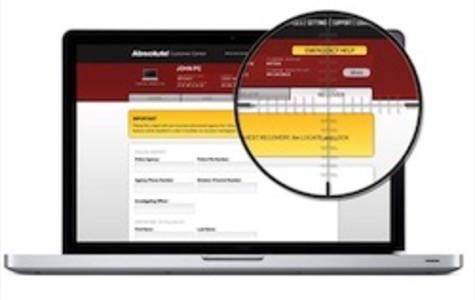
Lojack for Laptops (Windows, Mac OSX: $39.99/yr)
Notebook computers aren’t as quite portable as smartphones or tablets, but plenty of them still get lost or stolen. Absolute Software’s Lojack for Laptops has been around for years and offers remote file deletion, geolocation and remote locking with message display.
Absolute Software also has an internal Theft Recovery Team specifically dedicated to helping you recover your device. According to the company, the average recovery takes 45 days, and that 95% of successful recoveries occur within 407 days.
The process works like this:
- Install Computrace agent on laptop
- When laptop is stolen, contact local police and Absolute Software to file a report
- The Theft Recovery Team performs forensics to mine data and locate laptop
- Theft Recovery Team works with local police on your behalf, to locate laptop
These are not all the options available. Other contenders for Android devices include Plan B for Android, Where’s My Droid, Locate My Droid and Lost Phone. Other iOS apps include Gadget Track and Cylay for jailbroken devices.
Which approach is right for you? The answer depends on which platform you use. If you use only iPhones and iPads, then Find My iPhone is a clear winner.But if you have multiple devices across many platforms, you can’t beat Prey. The features available in the free version are robust – not stripped down. And one account will allow you to track iOS, Android, OSX, Linux and Windows devices all in one place.
Just remember, none these apps can prevent your device from being lost or stolen, and they may not succeed in helping you get it back, either. So no matter which one you choose, you still need to back up early and often. Even if you don’t recover your device – at least your data will be safely ready to take up residence on your next smartphone.




















